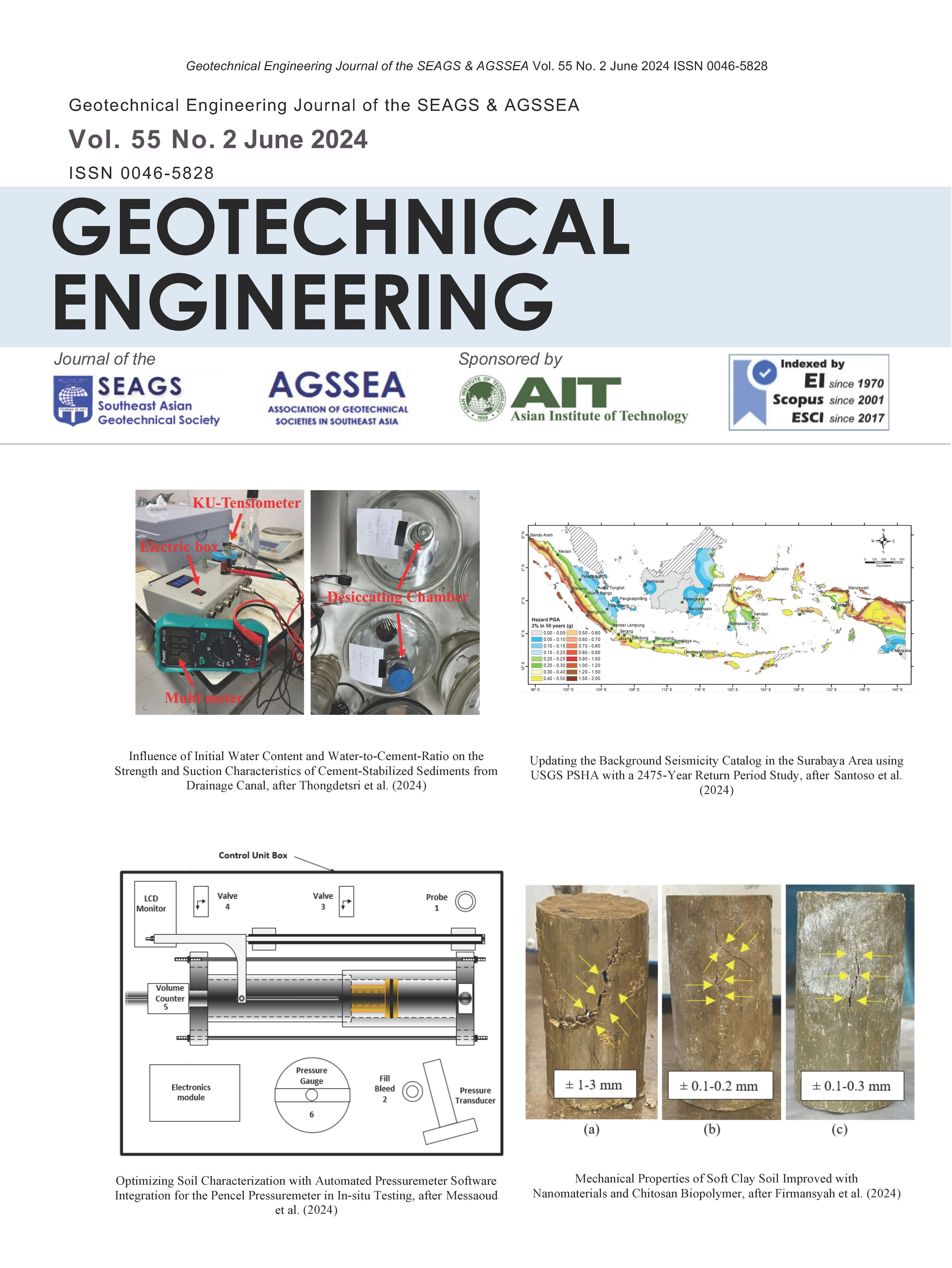Influence of Initial Water Content and Water-to-Cement-Ratio on the Strength and Suction Characteristics of Cement-Stabilized Sediments from Drainage Canal
Main Article Content
Abstract
This research aimed at investigating the basic properties of the canal sediments, which constitute waste materials dredged from drainage canal in Phetchaburi province. They were originally classified as silty sand with low shear strength due to their high water content and being unsuitable for construction use in their original conditions. An attempt was made to stabilize the canal dredged sediments with the Ordinary Portland Cement (OPC) in order to solve the environmental problems caused by the large amount of sedimentation to determine the potential use of construction materials based on the geo-environmental engineering framework. In this experimental study, air-dried canal dredged sediments were mixed with OPC by applying cement mix proportions of 150, 200, and 250 kg/m3 and initial water contents of 14.32% and 17.0% with early curing times of 3, 7, 14, and 28 days in order to investigate the gain in strengths with different water-to-cement ratio (w/c ratio) using unconfined compression tests. The underlying mechanisms which contributed to the hardening effects were evaluated using moisture properties, suction test, X-ray diffraction analysis (XRD), and scanning electron microscopic observation (SEM). The results indicated that a desirable unconfined compressive strength of the cement-stabilized canal sediments of more than 689 kPa could be achieved after being cured for 7 days. Utilizing this criterion, the appropriate w/c ratio within the range of 1.00 - 1.50 ensured that the material had been suitable as a subbase layer for all mixing proportions. In addition, higher initial water content with similar w/c ratio played significant role in the strength development. These findings were confirmed by the formation of reaction products such as calcium silicate hydrate (CSH) and Ettringite which improved internal microstructures. In addition, Soil-Water Retention Curve (SWRC) revealed that an increase in suction significantly reduced water content which conformed to an increase in strength. The utilization of cement-stabilized canal sediments had the potential to be used as construction materials, representing a sustainable approach to waste management.
Article Details

This work is licensed under a Creative Commons Attribution-NonCommercial-NoDerivatives 4.0 International License.
Copyright © 2019 Association of Geotechnical Societies in Southeast Asia (AGSSEA) - Southeast Asian Geotechnical Society (SEAGS).


